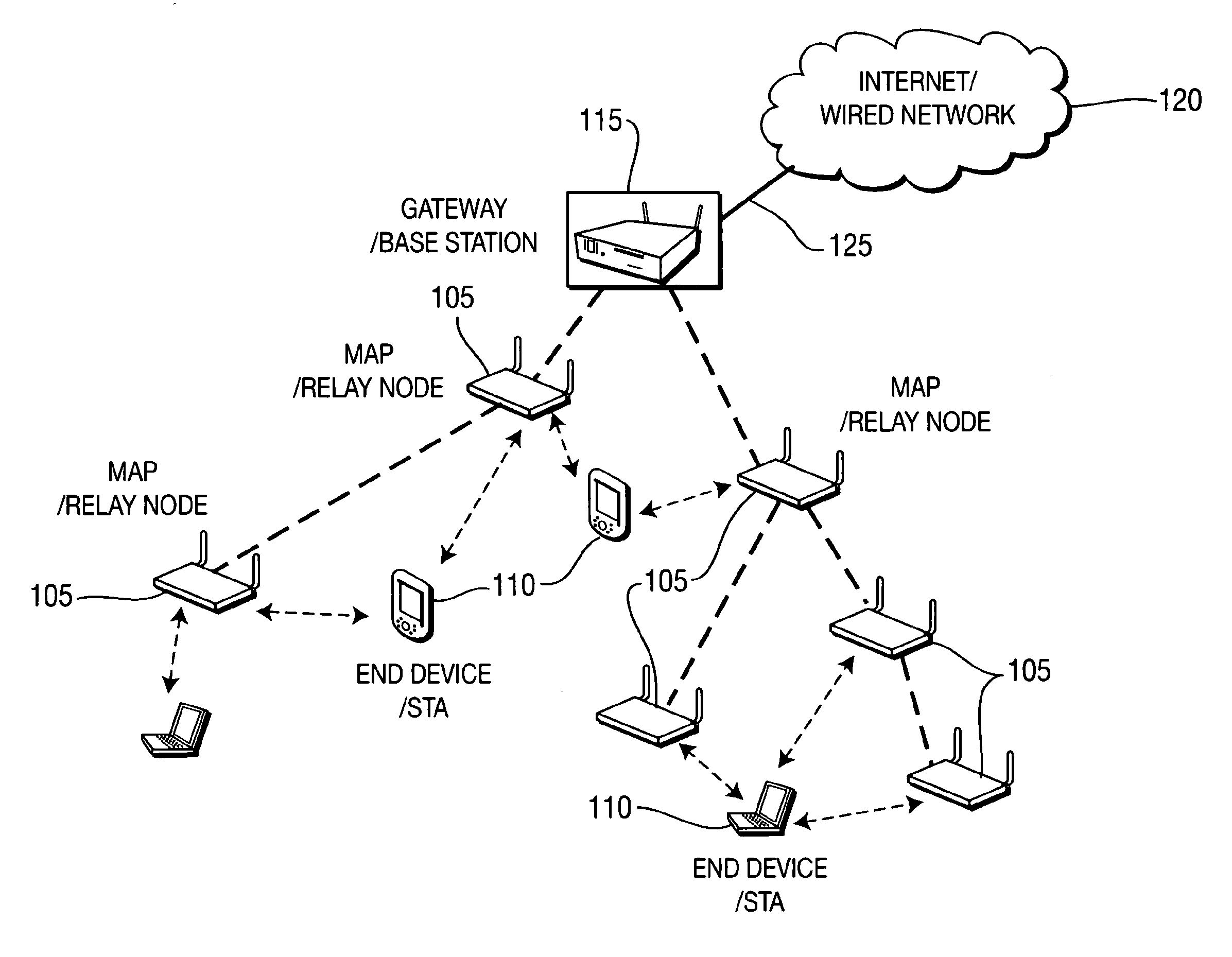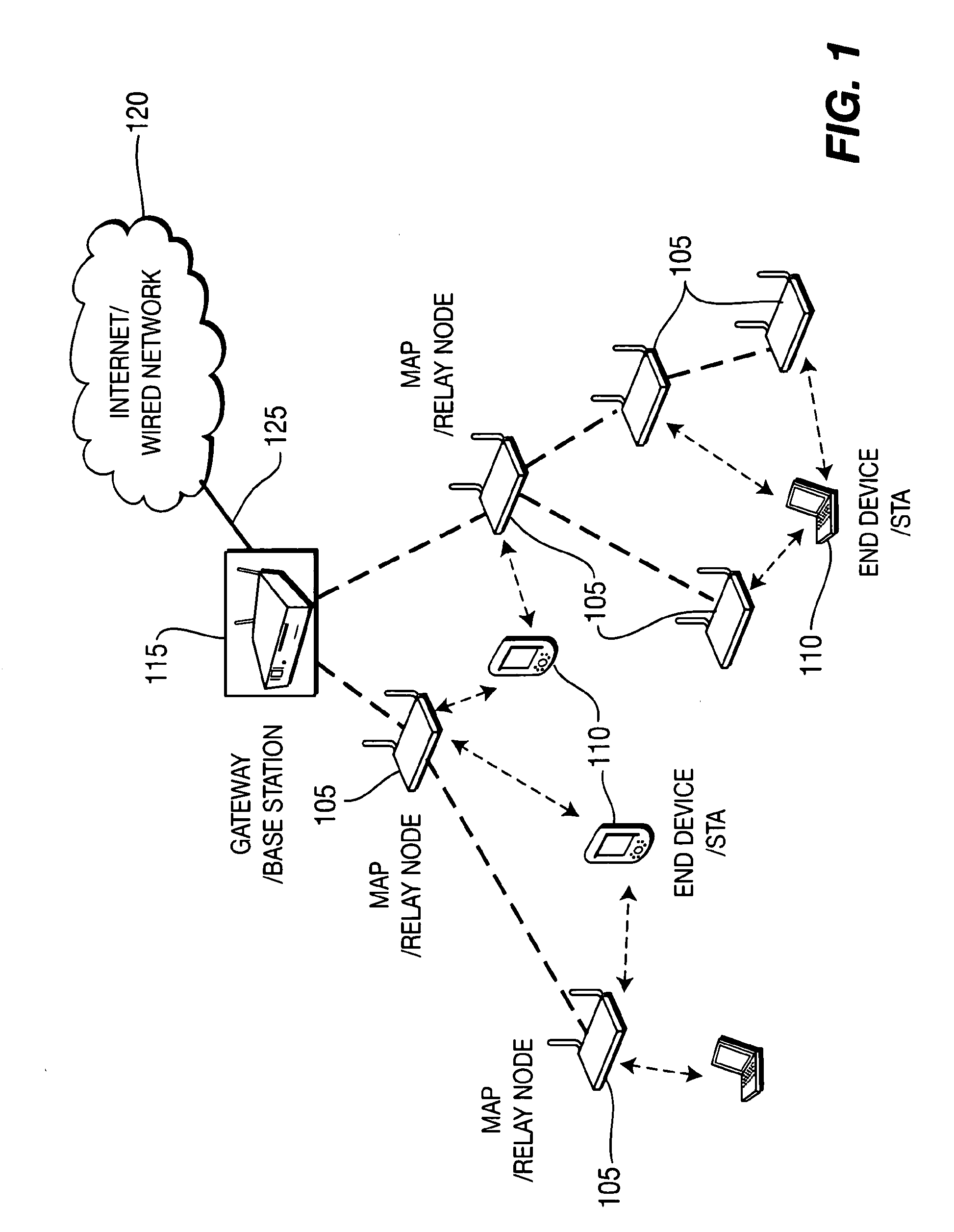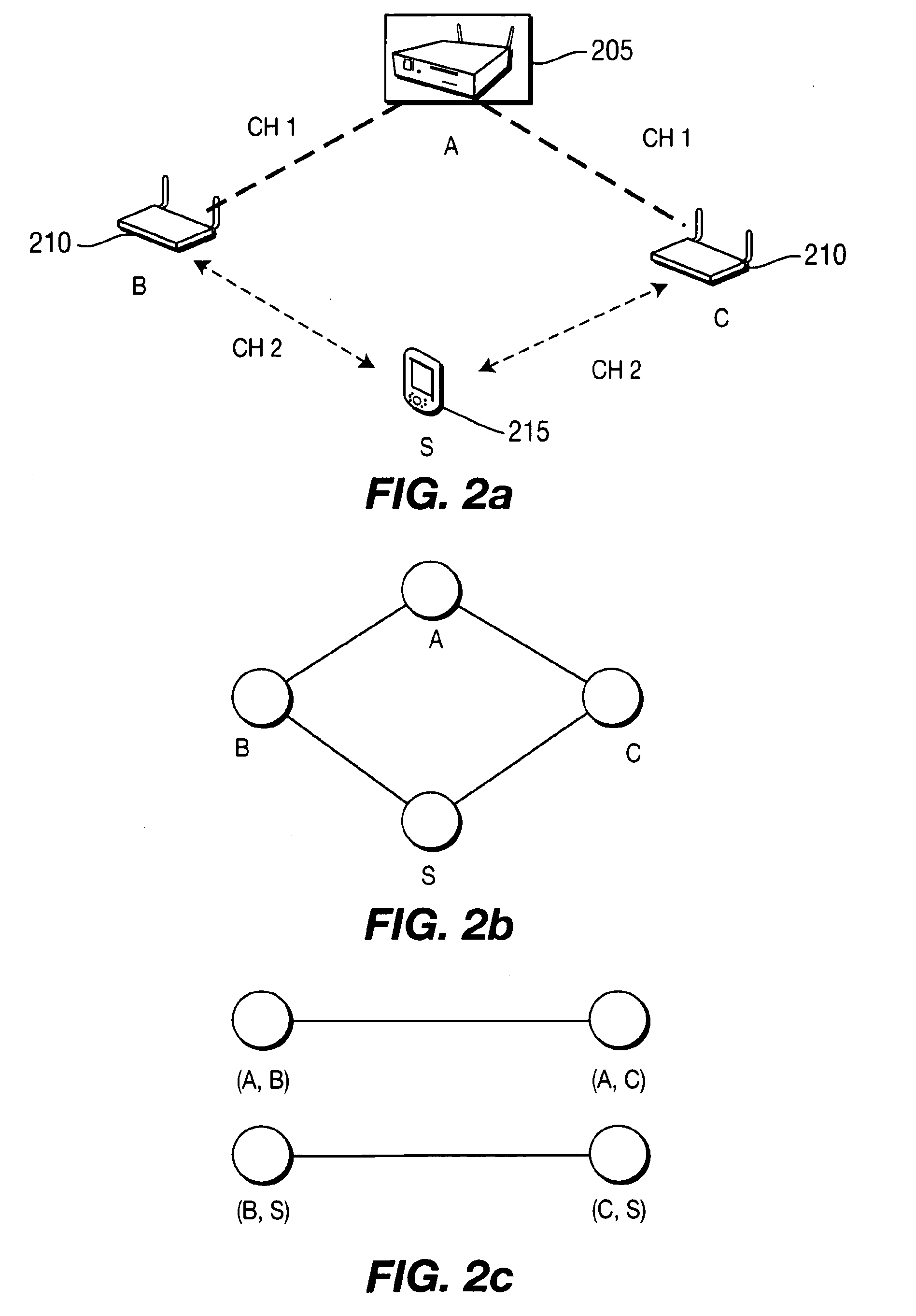Joint association, routing and rate allocation in wireless multi-hop mesh networks
a wireless multi-hop and wireless technology, applied in multiplex communication, frequency-division multiplex, assess restriction, etc., can solve the problems of severe bias on the rate allocation of stas, and the rate allocation problem is completely different from that of wired networks, so as to maximize the network throughput, improve the fairness, and maximize the effect of throughpu
- Summary
- Abstract
- Description
- Claims
- Application Information
AI Technical Summary
Benefits of technology
Problems solved by technology
Method used
Image
Examples
Embodiment Construction
[0024]Referring to FIG. 1, a network system considered in the present invention is illustrated. The network system includes three elements: relay nodes (RNs) 105 (e.g., MAPs), client STAs (end devices) 110, and gateway(s) 115 (base station). The relay nodes may have multiple physical radio interfaces or a single physical radio interface divided into multiple logical interfaces. One or more physical or logical radio interfaces is an access interface. The other interfaces are relay interfaces. The access interface is used for end-users / client nodes / STAs to associate with one or more MAPs / RNs for accessing the network, while the relay interfaces are used to construct a backbone multi-hop wireless network for packet forwarding between relay nodes. One or more relay nodes connect to the wired infrastructure 120 through wired Internet backhaul interface 125, acting as the Internet gateway(s) or base station. Clients / end devices / STAs 110 do not participate in packet relay or routing proces...
PUM
 Login to View More
Login to View More Abstract
Description
Claims
Application Information
 Login to View More
Login to View More - R&D
- Intellectual Property
- Life Sciences
- Materials
- Tech Scout
- Unparalleled Data Quality
- Higher Quality Content
- 60% Fewer Hallucinations
Browse by: Latest US Patents, China's latest patents, Technical Efficacy Thesaurus, Application Domain, Technology Topic, Popular Technical Reports.
© 2025 PatSnap. All rights reserved.Legal|Privacy policy|Modern Slavery Act Transparency Statement|Sitemap|About US| Contact US: help@patsnap.com



